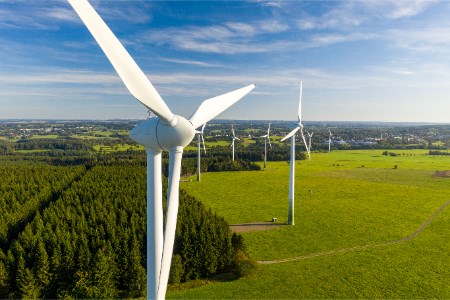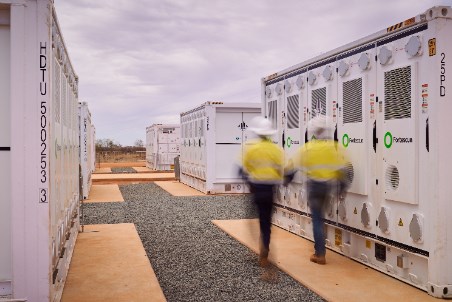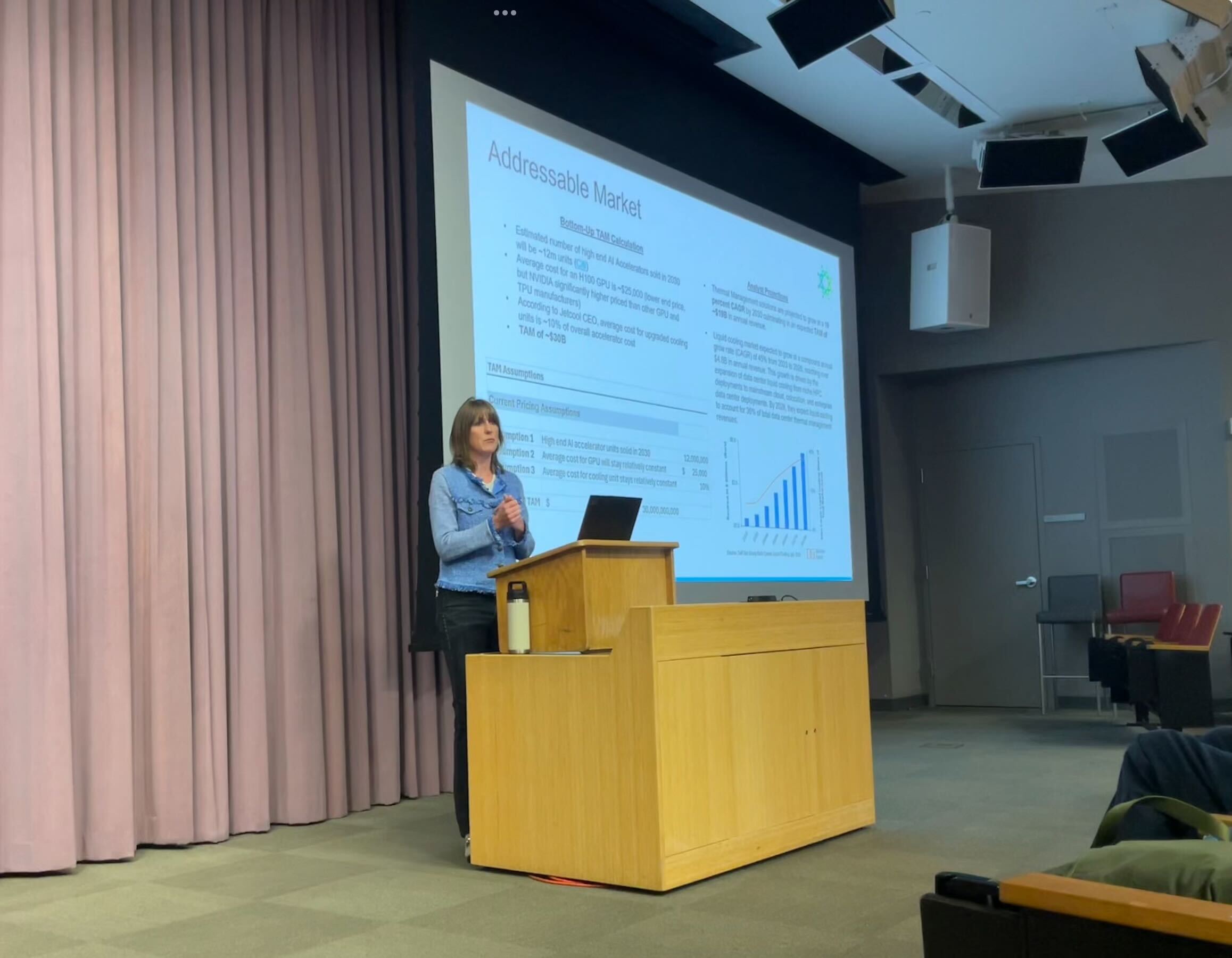ACWA Power unveils US$10 billion in new clean-energy and financing agreements – Energy Global

Report on ACWA Power’s Strategic Clean Energy Agreements
ACWA Power has formalized a series of agreements valued at a combined US$10 billion. These agreements, announced at the Future Investment Initiative in Riyadh, focus on financing partnerships, renewable energy projects, and technology development across the Gulf Cooperation Council (GCC), China, Central Asia, and Africa. The initiatives are strategically aligned with the United Nations Sustainable Development Goals (SDGs), particularly in advancing clean energy, climate action, and global partnerships.
Project Breakdown and Contribution to Sustainable Development Goals
Saudi Arabia: National Renewable Energy Program
In a significant move towards achieving national climate targets, ACWA Power, in partnership with the Water and Electricity Holding Company (Badeel) and Saudi Aramco, has secured financing agreements totaling US$6 billion. These projects are a core component of the National Renewable Energy Program (NREP).
- SDG 7 (Affordable and Clean Energy): The projects will supply clean electricity under long-term power purchase agreements (PPAs) to the Saudi Power Procurement Company (SPPC), directly increasing the share of renewable energy in the national grid.
- SDG 13 (Climate Action): This investment supports Saudi Arabia’s commitment to develop 70% of its renewable energy capacity by 2030, contributing substantially to national emission reduction goals.
- SDG 17 (Partnerships for the Goals): The collaboration between ACWA Power, PIF-owned Badeel, Saudi Aramco, and a consortium of financing banks exemplifies a robust public-private partnership model for achieving sustainable development.
Uzbekistan: Expansion of Renewable Infrastructure
Several key projects in Uzbekistan underscore a major investment in the nation’s energy transition, enhancing energy security and infrastructure while addressing climate change.
- Kungrad Wind and Battery Energy Storage System (BESS) Project:
- Financing: US$100 million in green equity bridge financing from Sumitomo Mitsui Banking Corp. (SMBC).
- Specifications: 1500 MW of wind capacity, over 300 MWh of BESS capacity, and 1444 km of transmission lines.
- SDG Impact: The project will provide clean energy to 1.6 million households (SDG 7), offset 2.5 million tonnes of CO₂ annually (SDG 13), and build critical energy infrastructure (SDG 9).
- Samarkand Solar and BESS Project:
- Financing: US$1.8 billion in project financing from a consortium including JBIC, ADB, EBRD, and IsDB.
- Specifications: Two 500 MW solar PV plants, a combined 1336 MWh BESS capacity, and over 500 km of transmission lines.
- SDG Impact: This initiative will power approximately 600,000 households (SDG 7), offset 1.4 million tonnes of CO₂ emissions per year (SDG 13), and showcases a powerful international partnership for sustainable development (SDG 17).
- Bash 2 Wind Project:
- Investment: US$360 million.
- Specifications: 300 MW capacity.
- SDG Impact: Set to power 438,000 households and offset 630,000 tonnes of CO₂ annually, directly advancing SDG 7 and SDG 13.
- Karatau Wind Project:
- Status: Commercial commissioning completed.
- Specifications: 100 MW capacity.
- SDG Impact: A tangible outcome delivering clean energy to the national grid, fulfilling commitments under SDG 7.
Global Technology and Innovation Partnerships
ACWA Power has signed three framework agreements with leading Chinese wind technology manufacturers: Goldwind Science & Technology, Envision Energy, and Mingyang Smart Energy. These partnerships are designed to accelerate technological advancement and localize supply chains.
- SDG 9 (Industry, Innovation, and Infrastructure): The agreements focus on boosting wind turbine efficiency and promoting technology transfer, fostering innovation in the renewable energy sector.
- SDG 8 (Decent Work and Economic Growth): A key objective is to promote local content and manufacturing in Saudi Arabia and other markets, stimulating local economies and job creation.
- SDG 17 (Partnerships for the Goals): These cross-border collaborations are essential for sharing expertise and developing joint projects to accelerate the global energy transition.
Conclusion
The US$10 billion in agreements represents a substantial commitment by ACWA Power and its partners to advance the global sustainable development agenda. By developing large-scale renewable energy projects, building resilient infrastructure, and fostering international and public-private partnerships, these initiatives make a direct and measurable contribution to achieving key Sustainable Development Goals, primarily SDG 7 (Affordable and Clean Energy), SDG 13 (Climate Action), SDG 9 (Industry, Innovation, and Infrastructure), and SDG 17 (Partnerships for the Goals).
Analysis of Sustainable Development Goals in the Article
1. Which SDGs are addressed or connected to the issues highlighted in the article?
The article on ACWA Power’s agreements highlights several Sustainable Development Goals (SDGs) through its focus on large-scale renewable energy projects, international financing, and technology partnerships. The following SDGs are directly addressed:
- SDG 7: Affordable and Clean Energy: This is the central theme of the article. The projects discussed, including solar plants, wind farms, and battery energy storage systems (BESS), are all aimed at increasing the supply of clean and sustainable energy. The article details new capacity being added in Saudi Arabia and Uzbekistan to power millions of homes.
- SDG 13: Climate Action: The article explicitly quantifies the environmental impact of these projects by stating the amount of carbon dioxide (CO2) emissions that will be offset annually. This directly contributes to climate change mitigation efforts.
- SDG 9: Industry, Innovation, and Infrastructure: The development of massive energy projects involves building resilient infrastructure, such as power plants, transmission lines, and substations. Furthermore, the agreements with Chinese technology companies to accelerate innovation, local manufacturing, and technology transfer directly align with fostering innovation and sustainable industrialization.
- SDG 17: Partnerships for the Goals: The entire initiative is built on a foundation of complex partnerships. The article describes collaborations between public entities (governments, state-owned companies like Badeel and NEGU), private companies (ACWA Power, Sumitomo Corp.), and international financial institutions (ADB, EBRD, IsDB, JBIC), exemplifying the multi-stakeholder approach needed to achieve the SDGs.
2. What specific targets under those SDGs can be identified based on the article’s content?
Based on the details provided in the article, several specific SDG targets can be identified:
- Under SDG 7 (Affordable and Clean Energy):
- Target 7.1: Ensure universal access to affordable, reliable and modern energy services. The projects aim to supply clean electricity to millions of households in Saudi Arabia and Uzbekistan, directly improving energy access.
- Target 7.2: Increase substantially the share of renewable energy in the global energy mix. The article details the development of multiple gigawatts of new wind and solar capacity, which directly increases the proportion of renewables in the energy mix of the respective countries. The Saudi projects are explicitly linked to the national goal of developing 70% of renewable energy targets by 2030.
- Target 7.a: Enhance international cooperation to facilitate access to clean energy research and technology… and promote investment in energy infrastructure and clean energy technology. The financing agreements with a consortium of international banks and the technology transfer agreements with Chinese firms are direct examples of this target in action.
- Under SDG 13 (Climate Action):
- Target 13.2: Integrate climate change measures into national policies, strategies and planning. The projects in Saudi Arabia are part of the “National Renewable Energy Program (NREP),” demonstrating the integration of climate goals into national strategy.
- Under SDG 9 (Industry, Innovation, and Infrastructure):
- Target 9.1: Develop quality, reliable, sustainable and resilient infrastructure. The construction of solar plants, wind farms, BESS, and over a thousand kilometers of high-voltage transmission lines represents a significant development of sustainable energy infrastructure.
- Target 9.b: Support domestic technology development, research and innovation. The framework agreements with Chinese firms aim to promote “local manufacturing, and technology transfer across Saudi Arabia, Uzbekistan, China, and other key markets,” directly supporting this target.
- Under SDG 17 (Partnerships for the Goals):
- Target 17.3: Mobilize additional financial resources for developing countries from multiple sources. The article details US$10 billion in agreements, with specific financing for Uzbekistan projects coming from a consortium of international development banks (ADB, EBRD, IsDB) and private banks.
- Target 17.17: Encourage and promote effective public, public-private and civil society partnerships. The article is a showcase of this target, detailing partnerships between ACWA Power (private), PIF-owned Badeel (public), Saudi Aramco (public), and various international partners.
3. Are there any indicators mentioned or implied in the article that can be used to measure progress towards the identified targets?
Yes, the article provides several quantitative and qualitative indicators that can be used to measure progress towards the identified targets:
- Investment Mobilized: The article provides clear financial figures that serve as indicators for investment in clean energy (Target 7.a) and financial mobilization (Target 17.3). Specific amounts include a “combined value US$10 billion,” a “total investment of US$6 billion” for Saudi projects, and “US$1.8 billion project financing” for the Samarkand project.
- Renewable Energy Capacity Added: The capacity of the new projects serves as a direct indicator for increasing the share of renewable energy (Target 7.2). Examples include the “1500 MW of wind capacity” in Kungrad, two “500 MW solar photovoltaic (PV) plants” in Samarkand, and the “300 MW Bash 2 wind project.”
- CO2 Emissions Reduced: The article quantifies the direct impact on climate action (Target 13.2), providing specific metrics for greenhouse gas reductions. These include offsetting “2.5 million tpy of CO2” (Kungrad), “1.4 million tpy of CO2 emissions” (Samarkand), and “630 000 tpy of CO2” (Bash 2).
- Households Supplied with Clean Energy: This is a key indicator for energy access (Target 7.1). The article states that the projects will supply clean energy to “1.6 million households” (Kungrad), “approximately 600 000 households” (Samarkand), and “approximately 438 000 households” (Bash 2).
- Infrastructure Development: The scale of infrastructure built is an indicator for Target 9.1. The article mentions the construction of “1444 km of 500 kV transmission lines” for the Kungrad project and “over 500 km of 220 kV and 500 kV transmission lines” for the Samarkand project.
4. Summary Table of SDGs, Targets, and Indicators
| SDGs | Targets | Indicators (as identified in the article) |
|---|---|---|
| SDG 7: Affordable and Clean Energy |
7.1: Ensure universal access to affordable, reliable and modern energy services.
7.2: Increase substantially the share of renewable energy. 7.a: Enhance international cooperation and promote investment in clean energy. |
– Number of households supplied with clean electricity (e.g., 1.6 million, 600,000, 438,000).
– Total renewable energy capacity added (e.g., 1500 MW wind, 1000 MW solar, 300 MW wind). – Total investment value in clean energy projects (e.g., US$10 billion, US$6 billion, US$1.8 billion). |
| SDG 13: Climate Action | 13.2: Integrate climate change measures into national policies, strategies and planning. |
– Annual CO2 emissions offset (e.g., 2.5 million tpy, 1.4 million tpy, 630,000 tpy). – Implementation of projects under national strategies like the National Renewable Energy Program (NREP). |
| SDG 9: Industry, Innovation, and Infrastructure |
9.1: Develop quality, reliable, sustainable and resilient infrastructure.
9.b: Support domestic technology development, research and innovation. |
– Length of transmission lines constructed (e.g., 1444 km, 500 km). – Number of new substations and switching stations built. – Establishment of framework agreements for technology transfer and local manufacturing. |
| SDG 17: Partnerships for the Goals |
17.3: Mobilize additional financial resources for developing countries.
17.17: Encourage and promote effective public, public-private and civil society partnerships. |
– Amount of financing mobilized from international banks (e.g., JBIC, ADB, EBRD, IsDB).
– Number and nature of partnerships formed (e.g., ACWA Power with Badeel, Saudi Aramco, Sumitomo, Chinese tech firms). |
Source: energyglobal.com
What is Your Reaction?
 Like
0
Like
0
 Dislike
0
Dislike
0
 Love
0
Love
0
 Funny
0
Funny
0
 Angry
0
Angry
0
 Sad
0
Sad
0
 Wow
0
Wow
0




















































.jpg.webp?itok=0ZsAnae9#)

























